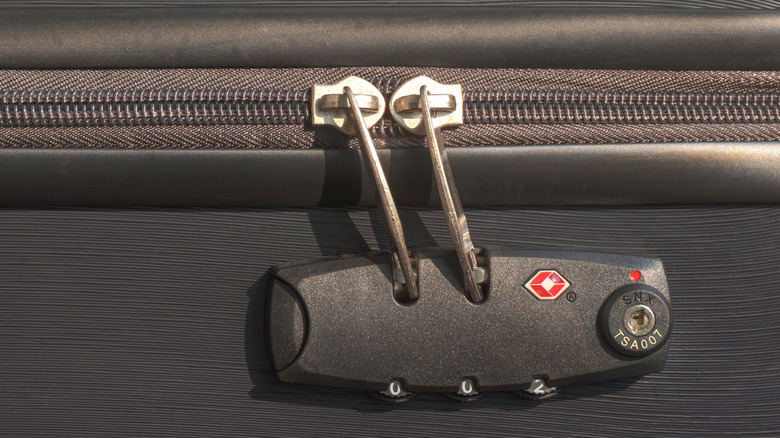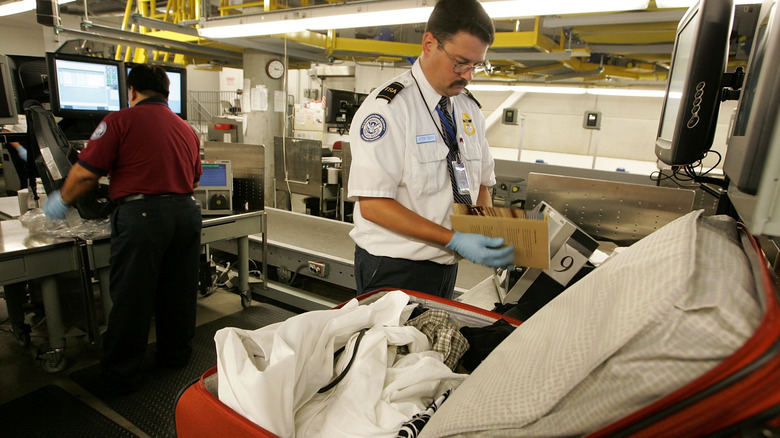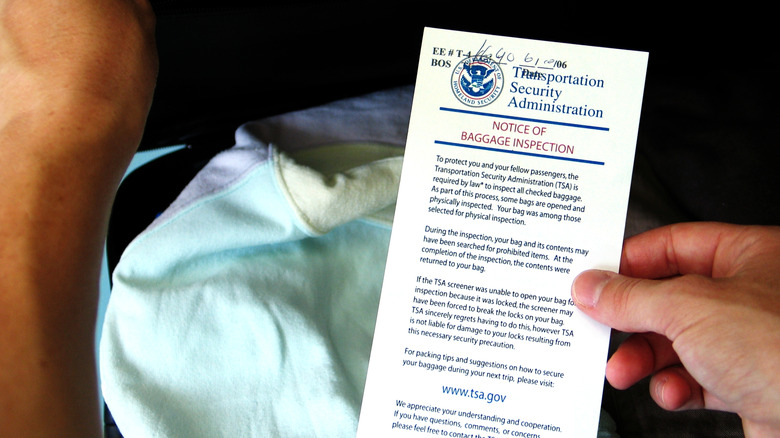When Can TSA Agents Unlock Your Luggage?
We may receive a commission on purchases made from links.
When it comes to traveling by air, there are a number of things you need to pay closer attention to in order to facilitate a more hassle-free experience. One, make sure that you have proof of identification to present at the security line; if your destination is international, you may want to ensure that your passport is up-to-date. Two, if your trip includes a lengthy airport layover, we recommend having these gadgets on hand to keep yourself busy while waiting for your next flight leg. Three, you need to pack your bags correctly and efficiently.
For example, if you're planning to bring an item that has some sort of battery in it, provided that it's an electronic allowed on an airplane by both the Transportation Security Administration (TSA) and the Federal Aviation Administration, you might be better off placing it in your carry-on. If you're planning to check a bag, bear in mind that it will be subjected to screening no matter what as required by the law. In some cases, depending on how the initial screening goes, your luggage may be marked for physical inspection, which means TSA agents will have to unlock your bag to see what's inside.
How does the TSA screen checked bags?
According to the TSA, approximately 1.3 million checked baggage are screened for explosives and other items deemed dangerous on a daily basis. Some airports — such as the Missoula International Airport and Long Beach Airport — are equipped with new baggage inspection systems that feature conveyor belts that automatically sort and track every piece of luggage from the moment they're handed over at the airline ticket counter till they're loaded onto their respective commercial aircraft.
These inspection systems are additionally rigged with technology capable of detecting potential security threats via 3D x-ray imagery. Bags that go through these explosive detection units are either cleared for travel or flagged for additional screening.
In general, the detection software in place is accurate enough that the vast majority of screened luggage go through without the need for a more thorough inspection. The latter usually happens when there are items in the luggage that are not clearly identifiable by the system in place, or when the system identifies a potential security threat — either scenario merits a closer look. Images taken of the bag's contents are electronically sent to be reviewed by a TSA officer located in a separate area, who scrutinizes the captures more closely. That agent then decides if further physical inspection is required.
What happens during a TSA-sanctioned physical inspection of a checked bag?
Once a TSA officer sends a piece of luggage off for hands-on inspection, another inspector can then unlock and open the bag to take a closer look at what the owner has packed inside. If the luggage is equipped with a lock recognized by the TSA — namely Travel Sentry and Safe Skies brand locks that have red diamond and torch logos on them, respectively — agents have the capability of unlocking the bag without having to cut or break the padlock. They use a universal master key provided to the TSA by the bag and lock manufacturer.
If the checked baggage has a lock on it that isn't TSA-recognized and an officer deems the piece warrants further hands-on inspection, the agent is given the authority to break or cut the lock in order to check what's inside. The entire physical inspection of a checked bag is executed in clear view of a closed-circuit camera. Every piece of luggage that has gone through this process, once it is cleared of any threats and deemed safe for air travel, will be repacked by the TSA officer who went through it, along with a "Notice of Inspection" left inside the bag to indicate that the contents have gone through a physical search. Only then will the inspected bag be handed off to the airline the bag owner will be flying with.


